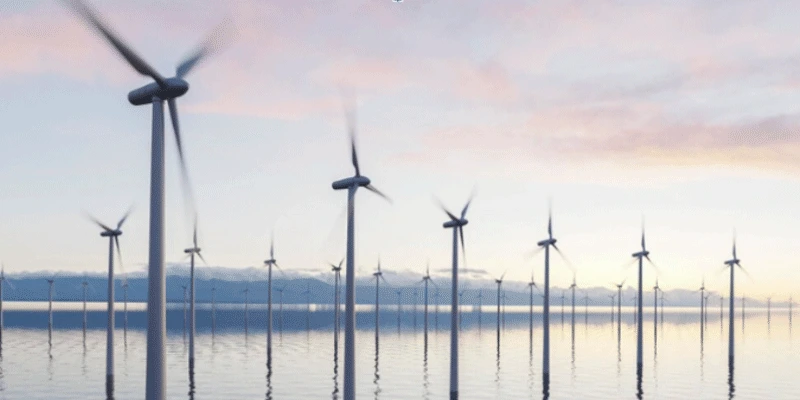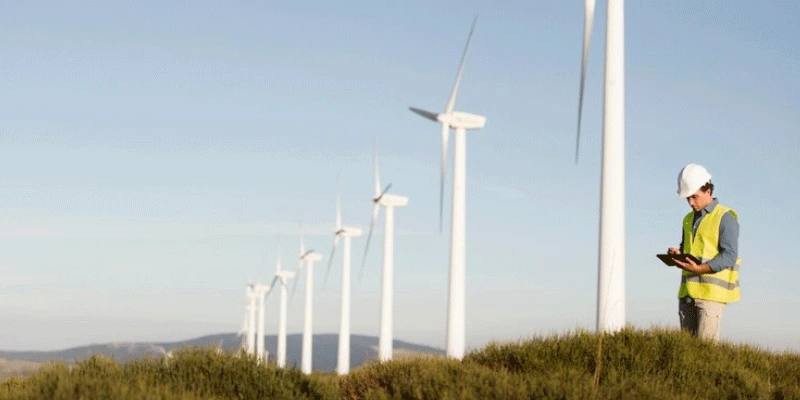Offshore wind energy is rapidly becoming a key player in the global transition to renewable energy. Positioned in open waters where winds are stronger and more consistent, offshore wind farms have the potential to produce significant amounts of electricity. However, building these massive structures in challenging marine environments requires innovative solutions. Concrete towers have emerged as a game-changer in offshore wind energy, offering unique advantages in terms of strength, durability, and adaptability to harsh conditions.
Why Offshore Wind Energy?
Offshore wind farms are built in oceans and seas, where there’s plenty of space and stronger, steadier winds. These factors make them ideal for generating clean energy on a large scale. However, the construction of wind turbines offshore is far more complex than on land. The structures must endure powerful waves, saltwater corrosion, and extreme weather conditions. That’s where concrete towers come into play.
What Makes Concrete Towers Suitable for Offshore Use?
Concrete towers stand out for their robustness and ability to withstand harsh environments. They are made from a material that is naturally resistant to corrosion, making them highly suitable for marine conditions where steel structures might rust over time. Here’s why concrete towers are preferred in offshore wind projects:
Corrosion Resistance
Unlike steel, concrete doesn’t corrode when exposed to saltwater. This makes it an excellent choice for offshore applications, where exposure to seawater is constant. With proper construction and maintenance, concrete towers can last decades without significant degradation.
Weight and Stability
Concrete is heavier than steel, which can be a significant advantage in offshore wind farms. The added weight provides greater stability to the structure, helping it remain steady against strong winds and powerful waves. This stability is crucial for maintaining the efficiency of wind turbines.
Customizable Design
Concrete towers can be designed and cast to meet specific project requirements. Offshore projects often require unique designs to accommodate varying water depths and seabed conditions. Concrete’s versatility allows for the creation of tailored solutions, such as tapered shapes or hybrid foundations.
Types of Foundations for Offshore Concrete Towers
The foundation is a critical part of an offshore wind turbine, as it anchors the structure to the seabed. Concrete towers can be paired with different types of foundations, depending on the depth and conditions of the water.
Gravity-Based Foundations (GBFs)
These are large, heavy structures that rest on the seabed. Made primarily of concrete, GBFs rely on their weight to remain stable. They are ideal for shallow to medium-depth waters and are straightforward to construct and install.
Monopile Foundations
While typically made of steel, some offshore projects are exploring the use of concrete for monopiles. These foundations are driven into the seabed and support the entire turbine structure. Concrete monopiles could provide a durable alternative to steel, especially in corrosive environments.
Floating Foundations
In deeper waters, floating foundations are used to support turbines. Concrete is increasingly being considered for these platforms due to its strength and long lifespan.
Cost-Effectiveness in Offshore Projects
While the initial cost of concrete towers may be higher than steel, they offer significant savings over time. Their durability reduces maintenance and repair costs, and their long lifespan ensures that offshore wind farms can operate efficiently for many years. Additionally, using locally sourced materials for concrete construction can lower transportation costs and benefit local economies.
Environmental Benefits of Concrete Towers
Concrete towers contribute to the sustainability goals of offshore wind energy. They can incorporate recycled materials, such as fly ash or slag, which reduces the carbon footprint of their production. Additionally, concrete’s long lifespan means fewer replacements, minimizing waste over time.
Challenges and Innovations
Despite their advantages, concrete towers face some challenges in offshore projects. The weight of the material can complicate transportation and installation, particularly in remote locations.
However, advancements in construction technology, such as modular precast sections, are helping to overcome these hurdles.
Another concern is the environmental impact of cement production, a key ingredient in concrete. Cement manufacturing is energy-intensive and contributes to greenhouse gas emissions. To address this, researchers are exploring eco-friendly alternatives, such as low-carbon cement and carbon capture technologies.
Real-World Applications
Several offshore wind farms have successfully incorporated concrete towers into their designs. For example, gravity-based concrete foundations are being used in projects across Europe, showcasing their reliability and adaptability. These projects demonstrate the potential of concrete towers to support large-scale offshore energy production.
The Future of Concrete Towers in Offshore Wind Energy
As offshore wind energy continues to expand, the demand for durable and efficient tower solutions will grow. Concrete towers are well-positioned to meet this demand, thanks to their strength, stability, and resistance to harsh marine environments.
Innovations in concrete materials and construction techniques will further enhance their appeal, making them an essential component of the offshore wind energy revolution. By combining sustainability with functionality, concrete towers are helping to pave the way for a cleaner, greener future.
Conclusion
Concrete towers are transforming the offshore wind energy industry by providing a stable, long-lasting foundation for turbines in challenging environments. Their ability to resist corrosion, support customized designs, and reduce long-term costs makes them a valuable asset in the pursuit of renewable energy. As technology continues to advance, concrete towers will play an increasingly vital role in harnessing the power of the wind, ensuring a sustainable energy future for generations to come.



